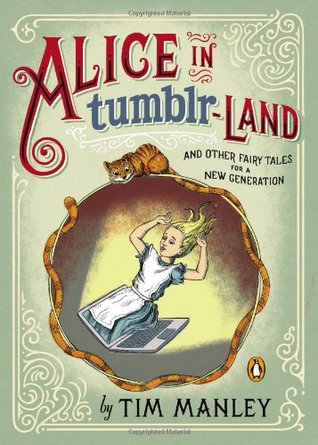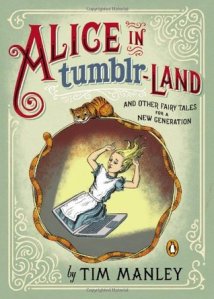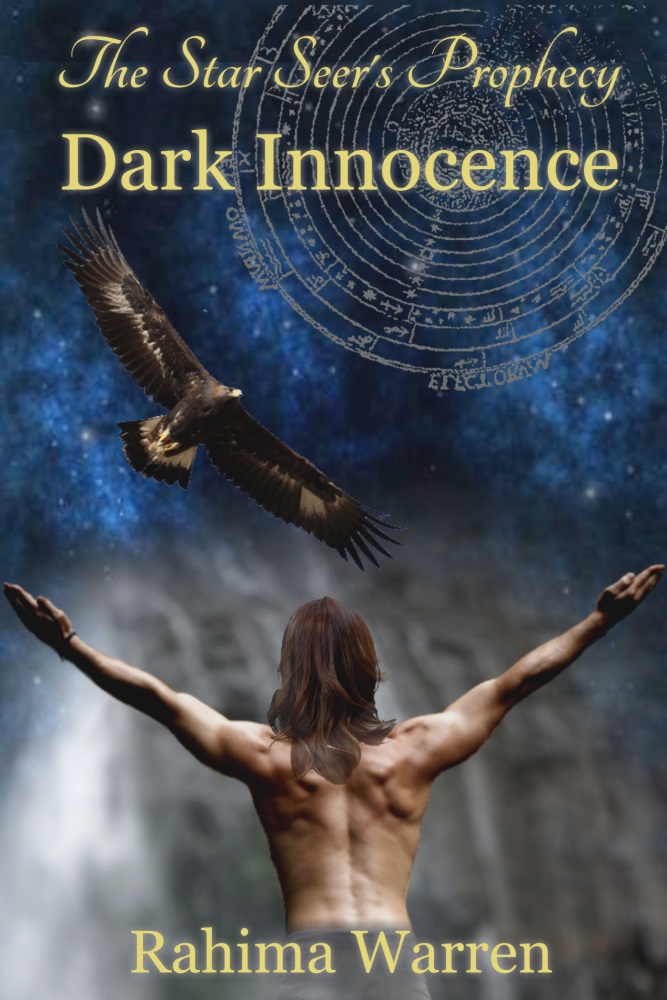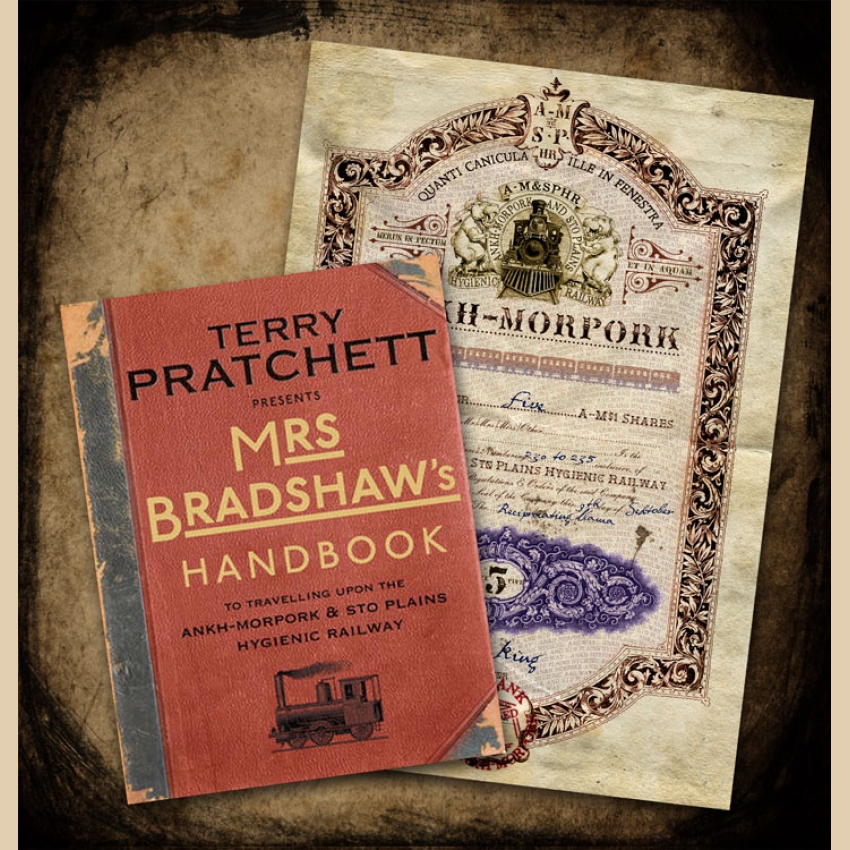
Review: Alice in tumblr-Land and Other Fairy Tales for a New Generation, by Tim Manley
Peter Pan finally has to grow up and get a job, or at least start paying rent. Cinderella swaps her glass slippers for Crocs. The Tortoise an the Hare Facebook stalk each other. Goldilocks goes gluten free. And Rapunzel gets a buzz cut.
Here are more than one hundred fairy tales, illustrated and reimagined for today. Instead of fairy godmothers, there’s Siri. And rather than big bad wolves, there are creepy dudes on OkCupid. In our brave new world of social networking, YouTube, and texting, fairy tales can once again lead us to “happily ever after” – and have us laughing all the way.
When I picked up this book for review, I figured there were two ways it could go: it could either be a clever, thoughtful update of the old fairy tales, cleverly integrating modern technology and mores to present their morals in a more relevant context that could be entertaining; or it could be a cheap cash grab with little effort put into it and no real insight into what it was discussing. I’ll save you some time – it was the latter.
Let’s start off with the book’s biggest problem, one that shows up before it’s even had the chance to bore us with its prose: the promise of “over one hundred fairy tales” – 146, to be precise. In reality, there are thirty-one fairy tales in the book – barely a fifth of that promised to us on the dust jacket. How can the publisher justify such a bald-faced lie? Each and every story is broken up into “chapters” of under a hundred words. By this logic, the Harry Potter books are 199 short stories about Harry’s life at Hogwarts fighting Voldemort.
(I hope my readers appreciate the fact that this book was so boring it drove me to do math. Math.)
At first, reading through the book, it looks like it will live up to its promise of over a hundred fairy tales – the “chapters” are presented one to a page, with an illustration either on the facing page or above it. When the reader turns the page, instead of finding the next chapter of the fairy tale, we instead find a completely different fairy tale chapter, and then another one, and another one, all entirely different; the twelve chapters that make up Alice in tumblr-Land each have several pages between them. This essentially ruins any sense of continuity that would otherwise have linked the chapters, and indeed for the first few chapters for each fairy tale, I didn’t even realise they made up one continuous story, and by the time I did I had forgotten so many details from the earlier chapters the later ones had little impact as a result. Not that there are many details to begin with in these fairy tales – most of them could conceivably be told in a Facebook status or tumblr post without being overly long or tedious to read (except for the fact that they’re all quite boring). I’m not sure what drove Manly to break up the stories like this, but it’s safe to say that if he was hoping to frustrate his readers, he succeeded.
Alice in tumblr-Land is classified as a humour book, so you would at least expect it to be amusing. Unfortunately, it isn’t. The “humour” apparently comes from the fact that the stories are told using slang and dropping the names of websites at random throughout the text. Using the phrase “This blows” to sum up a situation can have comedic value – if its use is meant to surprise the reader. If a smart, upstanding and erudite butler to a noble family were to say, after an entire book of speaking The Queen’s English, something along the lines of, “Master, if I may be so bold, my assessment of the situation is that it blows,” that would be funny, or at least vaguely amusing, because it’s subverting our expectations. Rhett’s classic “Frankly my dear, I don’t give a damn” is one of the most famous lines in literature and movie history precisely because of this notion of shocking the audience. Having Gretel sum up her and Hansel’s situation by saying “This blows” fifty words after we’re introduced to the characters has no impact on the reader because no history has been established with these characters. Sure, we wouldn’t expect to hear the phrase in your standard fairy tale, but as it’s often told, Hansel and Gretel has almost no dialogue anyway – most of the classic fairy tales don’t. With no history for any of these characters, the phrase has about as much impact as if a typical fourteen-year-old said it. Similarly, name-dropping Chatroulette in a book isn’t funny, nor is mentioning Instagram, or filters. The Pinocchio chapters don’t even have these attempts at humour to bog them down; each one just has Pinocchio telling another lie, with the “joke” apparently being that, in the accompanying picture, his nose grows longer. (Really, it wasn’t even that big of a plot point in the original book – it came up maybe twice.) And when it grows longer, it breaks things! And this is apparently the whole joke.
Well, at the very least, do the stories offer any insight into the tales on which they’re based? Well, no, not at all. The stories of Snow White and Little Red Riding Hood might as well have been about characters named Jenn and Amanda for all the relation they had to folklore. Robin Hood, Jack and the Beanstalk and the story of King Arthur are so far removed from their mythologies that almost no connections can be drawn between them. The Three Billy Goats Gruff seems to think that featuring three goats is enough to say the story was based off of them. Some stories stay truer to their origins, but it doesn’t add much to their quality. The Peter Pan stories still deal with the trials of a kid who doesn’t want to grow up; and in the end, just like in the original book, Peter learns to accept that growing up is inevitable and enters the adult world – so, really, nothing was gained from this that couldn’t be gotten from the original, unless you really, really wanted to hear about Peter’s blog. One or two stories go in a different direction from the source material; instead of Mulan being a girl who pretends to be a boy to serve in the army and protect her father, Mulan is transgender and comes to embrace his new identity as Ping – though very quickly; the story doesn’t even come close to presenting the difficulties transgender people face coming to terms with themselves and living their lives as they really are. Yet other stories take a character trait from their title characters and waters that trait down to make it less interesting. Chicken Little becomes a story about a chick suffering from Generalised Anxiety Disorder, a serious psychological condition that requires years of medication and behaviour therapy to cure, and yet is never dealt with – on the contrary, it appears to be a source of humour, despite being a truly difficult disorder to live with that can have damaging and lasting effects on a person’s life. Sleeping Beauty is no longer in an enchanted sleep because she pricked herself with a spindle; instead, that’s something that was dealt with off-screen in her past. In the book, she appears to suffer Major Depressive Disorder, a serious mental disorder affecting a full third of the population and yet which faces so much stigma from a society that equates it with general sadness that many people don’t get treated for it. Instead of ignoring it and milking it for jokes like Chicken Little does, the book has Sleeping Beauty deal with and overcome her depression with almost insulting ease – a few YouTube videos of people expressing their deep feelings through song, a heart-felt talk with a friend that makes her realise the true source of her sadness, and suddenly she’s well on the path to recovery. If only real life were so convenient.
Well, at the very least, do the stories make us realise anything about the modern condition and the way we interact with technology? I think the answer to that should be clear by now. At no point are we really forced to confront how we conceive of and use modern technology; it more just mentions it in passing like we would casually mention having a Facebook discussion with a friend. Nor are we forced to confront the morals of the original fairy tales, and nothing said about them inspires us to view them in a new light. This book is a literary non-entity, leaving as much of an impression on me as Under the Skin did; despite finishing it yesterday, I had to look up story elements today for the review. The stories slid out of my mind almost as soon as they entered, and from page one I found my eyes straying back to the first lines of stories I had already read, reading and rereading them three or four times each in a futile effort to stop them from running through my hands like water. To borrow an expression from my late grandmother, these stories go in and out like a fart in a colander, and nothing can make them stick. Perhaps the book’s one high point is that it’s easy to finish; you can read it in an afternoon and as such have it done well within your local bookstore’s return period. You can buy it, read it, then give it back for a full refund and spend your time and money on more worthwhile books, like a collection of Grimm and Anderson’s fairy tales, which, despite their age, are far more applicable to modern life than the thirty-one stories collected here.
Overall rating: 1/5





One Comment
Pingback: